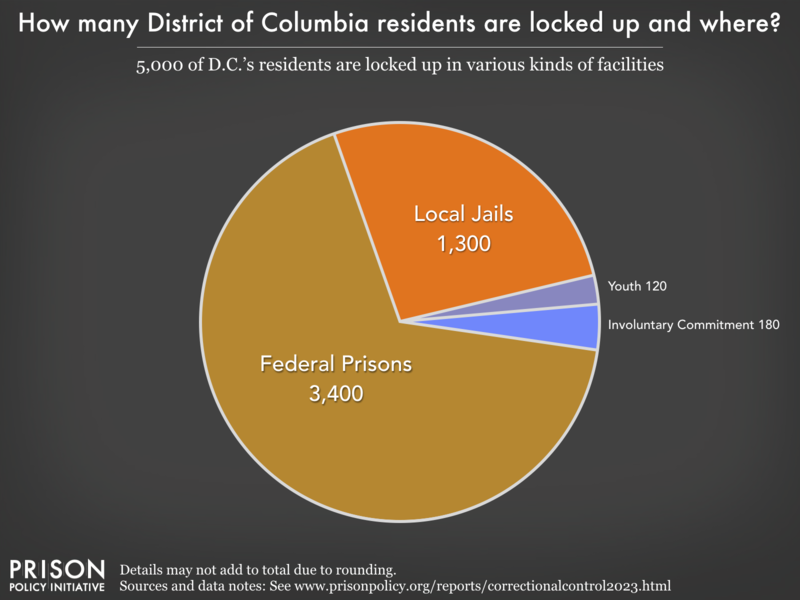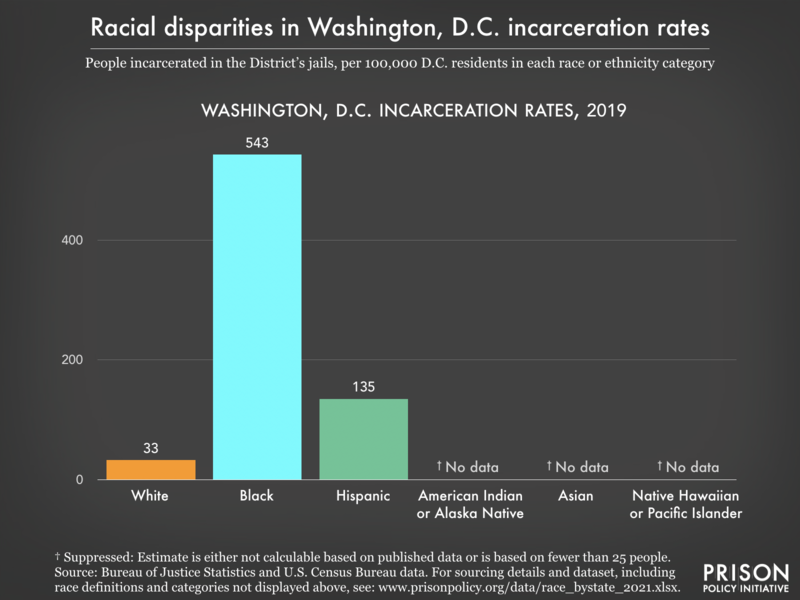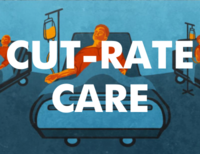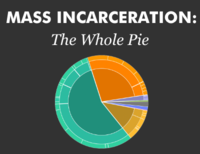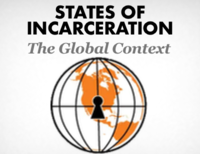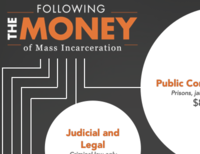District of Columbia profile
Washington, D.C. has an incarceration rate of 816 per 100,000 people (including prisons, jails, immigration detention, and juvenile justice facilities).
The D.C. criminal justice system is especially unique—after the Lorton Prison Complex was closed down in 2001, the District's prison population has been integrated into the federal Bureau of Prisons system. The District of Columbia's Department of Corrections currently operates two facilities that serve functions similar to local jails. While we don't (yet) have a good annual data source for prison growth after 2001, the data that does exist indicates that District of Columbia has the highest incarceration rate in the U.S., and therefore the world.
5,000 people from the District of Columbia are behind bars
Additionally, the number of people impacted by local jails in Washington, D.C. is much larger than the graph above would suggest, because people cycle through local jails relatively quickly. Each year, at least 12,000 different people are booked into local jails in Washington, D.C.
Rates of imprisonment have grown dramatically in the last 40 years
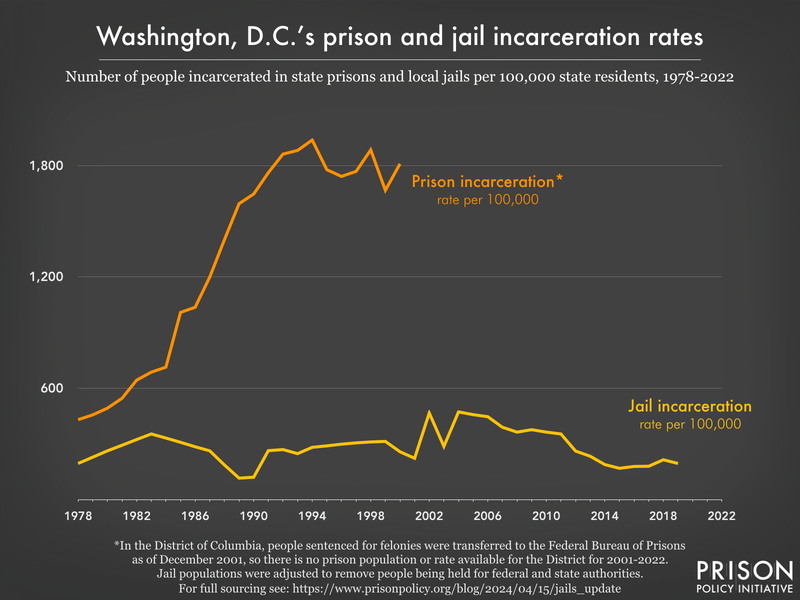
- total numbers rather than rates.
- Women’s prisons: Incarceration Rates | Total Population
- Men’s prisons: Incarceration Rates | Total Population
People of color are overrepresented in prisons and jails
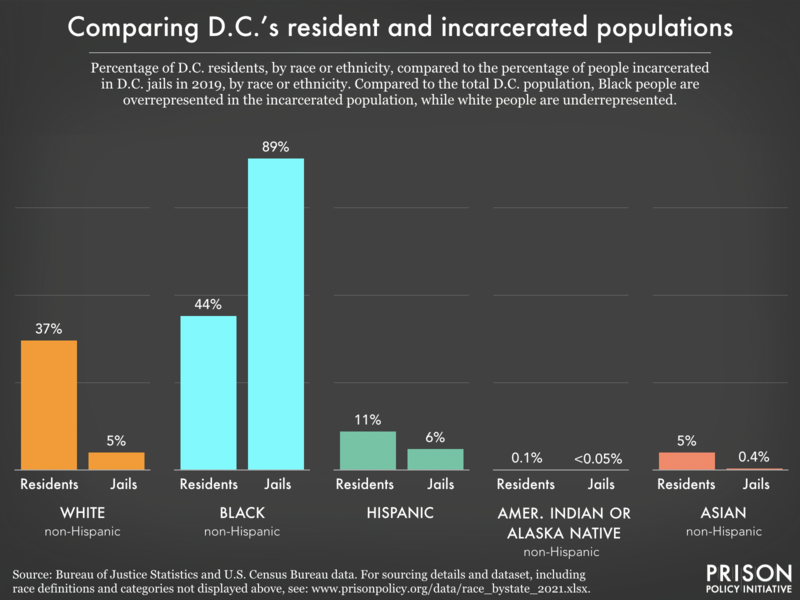
Today, D.C.’s incarceration rates stand out internationally

D.C.'s criminal justice system is more than just its prisons and jails
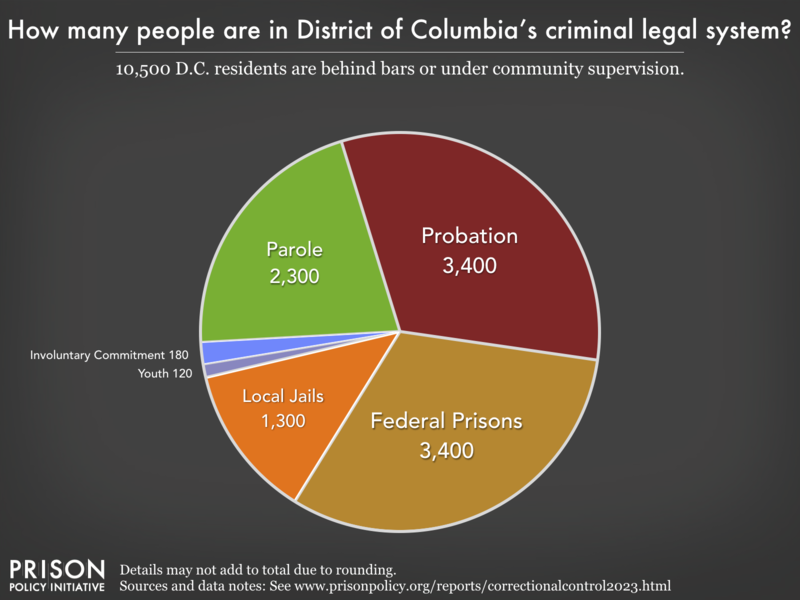
Reports and briefings about the District of Columbia's criminal legal system:
Filter to show
- People on probation in D.C. are saddled with onerous rules and conditions they must follow every day or risk incarceration.
- Prisons in D.C. have tablets, but they may be being used to restrict incarcerated people’s access to books and sap them of the little money they have.
- 80% of people in District of Columbia jails have not been convicted of a crime, meaning they're legally innocent. There are simple steps it can take to reduce this number. Why isn't it?
- District of Columbia releases roughly 9,043 men and 1,430 women from its prisons and jails each year. What is it doing to support them upon reentry?
- People on parole in D.C. can be sent back to prison for "associating" with anyone who has a felony or misdemeanor conviction — even loved ones who are trying to support them
- DC's choice to criminalize "failure to appear" may be hurting public safety
- Data from Washington, D.C. and other jurisdictions shows: Releasing people pretrial doesn't harm public safety
- In D.C., 5,000 people are incarcerated and another 5,700 are on probation or parole.
- Our report State of Phone Justice shows that D.C. jails charge much more than necessary for phone calls, reaping profits for companies
- The D.C. Central Detention Facility has a jail-based polling location that enables people detained there to cast ballots in elections
- D.C. hurts jury diversity by excluding people with felony records
- Why is D.C. jailing so many people for minor parole and probation violations?
Other resources
- Research on the District of Columbia in our Research Library
Events
- April 15-17, 2025:
Sarah Staudt, our Director of Policy and Advocacy, will be attending the MacArthur Safety and Justice Challenge Network Meeting from April 15-17 in Chicago. Drop her a line if you’d like to meet up!
Not near you?
Invite us to your city, college or organization.
